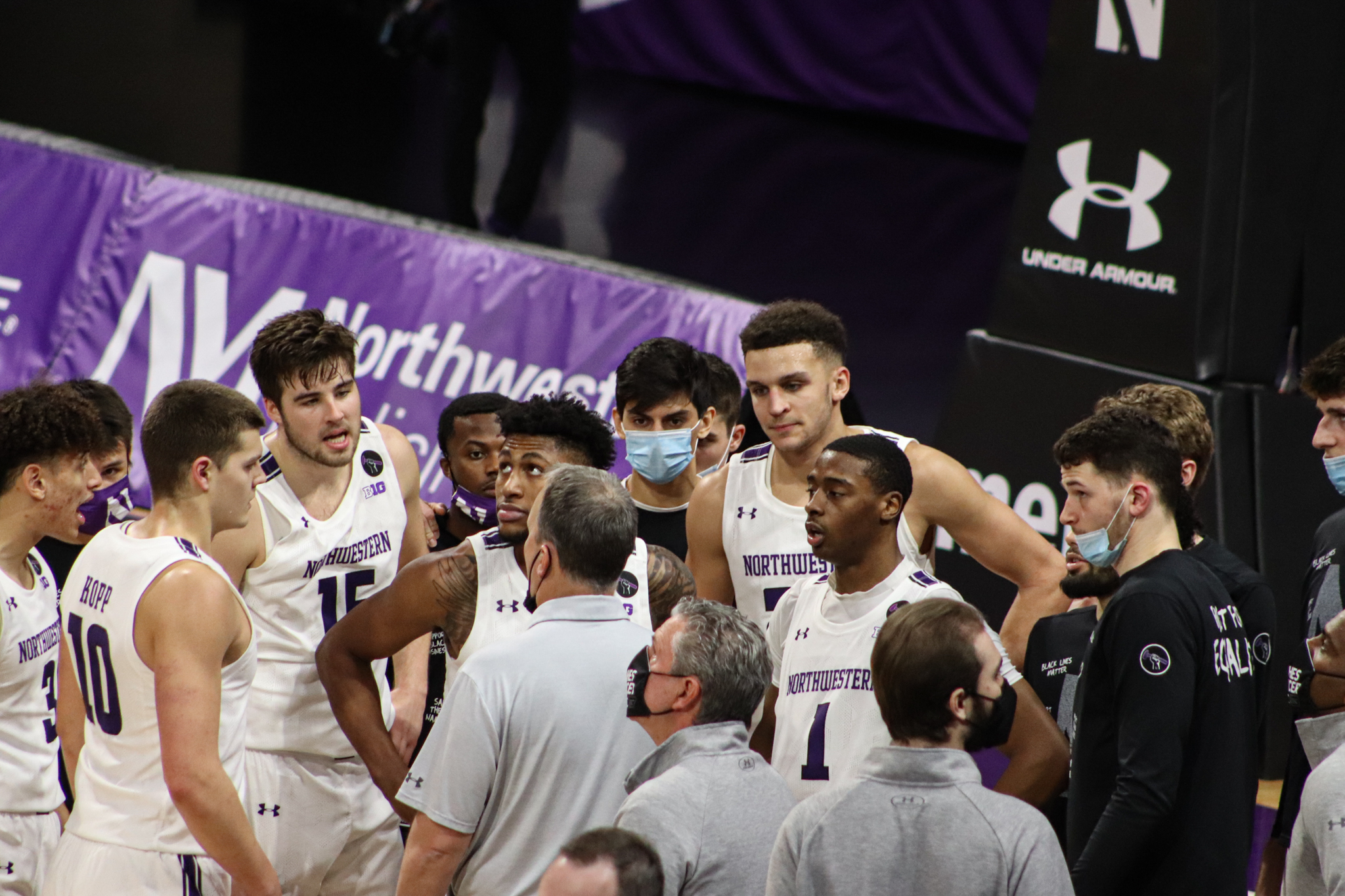
Alright, let’s get the “sportswriter hot take of the day” out of the way early: despite losing 12 straight games, Northwestern basketball (6-13, 3-12 B1G) is not the worst team to walk the Evanston campus, nor are they the worst squad in the country, nor do they deserve all the criticism they get.
Are you still with me? Good, thanks for not immediately flocking to the comments to disagree.
Northwestern basketball is in a tough spot, as while they have fantastic talent and the ability to keep up with some of the best teams in the country, they don’t have the win totals to show off or the gutsy buzzer-beaters to play on repeat. When you lose 12 straight games, people don’t seem to pay any attention except that number. Yet, as any sports nerd or McCormick student will tell you, there’s always more than one number to pay attention to.
In this article, I’m going to try to dissect some of the more common criticisms the team has faced this year, reframe them in different contexts, and find maybe a more optimistic look at a team that’s had gray clouds over their heads for the past six weeks.
Afterwards, you can flock to the comments. But in the meantime, let’s take a shot:
“This wasn’t supposed to be a rebuilding year, especially after last year (8-23, 3-17 B1G)”
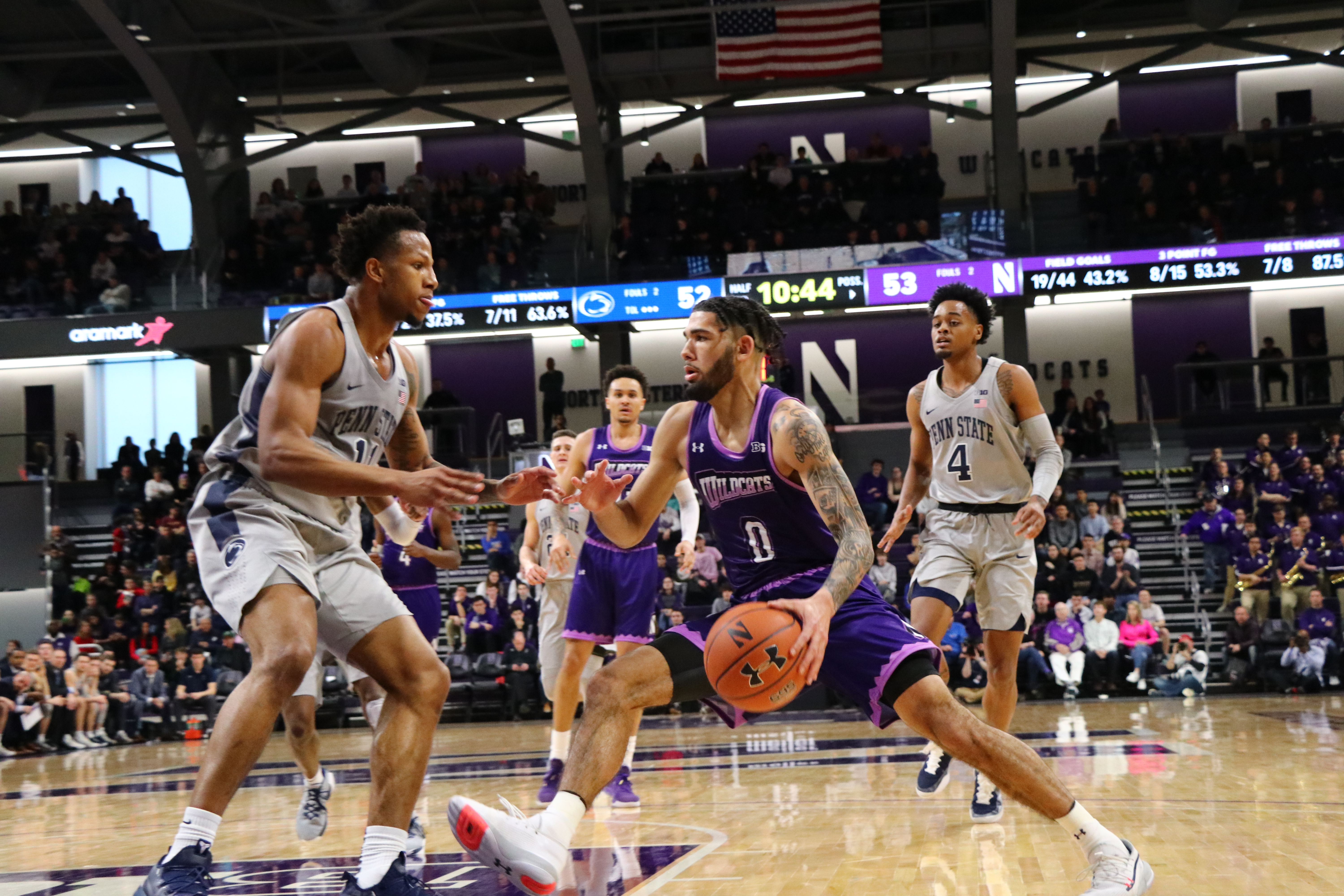
Alright, cracking open this one early, huh?
A lot of analysts (myself included) were excited for Northwestern basketball this year due to the growth of the young squad. Players like sophomore center Ryan Young, sophomore guard Boo Buie and sophomore transfer guard Chase Audige had had a year to develop as a crew, grow together and come back swinging through the Big Ten. So why haven’t they been clicking as much as we’d like them to, especially after such a grit-and-grind last year?
Short answer? They have been.
Look, you need to remember that the 2019-2020 Northwestern team was really, really bad. Like, insanely bad. A loss to Merrimack, a school who had just come up from Division II, on their home opener bad. Losses to Hartford and Radford bad. Yes, while a lot of experience comes from within your own conference, that Northwestern team was doomed from the start.
Compare that to this year, where their only non-conference loss was a heart-breaker to Pitt, the team does seem to be clicking better than they were last year, despite the aforementioned losing streak. They’re looking for a good identity, as well as trying new roles for the younger players to shape their future; while some may see this as a step back, it’s actually setting up a future run nicely.
For example, everyone’s favorite poster child: Boo Buie. Despite several games of only scoring two or even no points, the guard is actually shooting 34.5% from downtown compared to last year’s 28.2%, and is dishing 4.3 assists per game, compared to last year’s 2.4. As your possible guard of the future, you’re going to want someone who can run an offense, not just pull up and take ridiculous amounts of shots.
Besides, that’s Audige’s job: the transfer guard, who didn’t play last season due to eligibility rules, is becoming a critical part of the team’s ability to score and defend. Audige is riding five straight games with double-digit point totals, and is picking up crazy amounts of rebounds (3.6 per game) and steals (1.4 per game). He is also leading the ’Cats in field goals made, three pointers made, and steals.
Let's check in on @ChaseAudige.
— Northwestern On BTN (@NUOnBTN) February 13, 2021
Yep, the @NUMensBball star's still on 🔥. pic.twitter.com/tsbrd7Zc4l
On top of that, Northwestern as a team is improving across the board from last season, including in points per game (72.8 to last year’s 64.9) three-pointers (8.5 to 6.1) and assists (15.3 to 13.7). The ’Cats are starting to find their offense again … which brings us to our next critique.
“We take too many threes a game, it’s weighing us down and we need to adjust.”
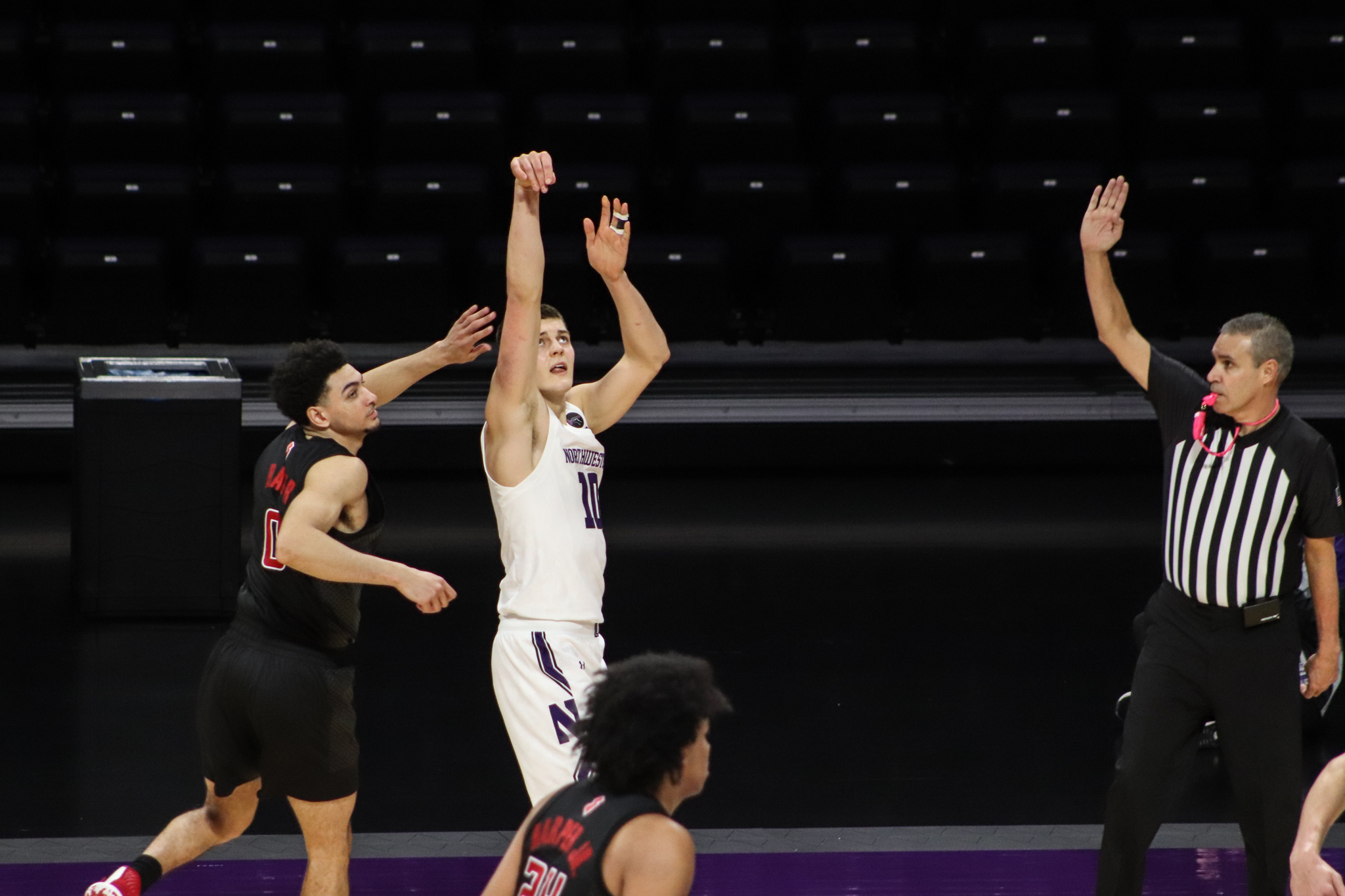
This one has a bit of merit, as while Northwestern has attempted a total of 1133 shots from the floor, 456 of them have been from beyond the arc; that’s over 40% of shots taken from downtown. Northwestern is currently 65th in the NCAA for three-point field goals made; not necessarily a good ranking, but also not abysmal.
Why’s this happening? One of the primary reasons is what I like to call “a lack of Shaq,” meaning the ’Cats don’t have a designated “big guy” to drive into the paint and dominate for easier layups. The team has tried with several different options this season, including our favorite, Ryan Young, but none of them have done the job quite right. Meanwhile across the Big Ten, players like Iowa senior center Luka Garza and Illinois sophomore center Kofi Cockburn turned in insane stat lines every night, notching ridiculous double-double totals with great shots and easy rebounds.
As a result, Northwestern first tried to combat this with ridiculous amounts of three-pointers, in a manner similar to the Golden State Warriors: have a guy at the top of the key to organize, and two fantastic shooters on the wings. While this turned up dividends early (a 3-0 start in Big Ten play) teams like Iowa and Illinois have caught on, and instead played to their own strengths.
And to the ’Cats’ credit, they’ve recognized it too, and began instead trying to work with more big guys down low. For the past four games, they’ve started Ryan Young (who hadn’t started a game this season before then), Anthony Gaines and junior forward Pete Nance, in order to compensate. The results have been mixed, but three-of-four games being single digit losses is nothing to sneeze at.
Back-to-back games in double figures for @ryanyoung2323 💪 pic.twitter.com/fjZfVTrd2N
— Northwestern Basketball (@NUMensBball) February 1, 2021
The more the ’Cats tinker with the strategy, the more it’ll pay off in the long run.
“The Big Ten is good every year, just because it’s strong this year doesn’t give the ’Cats an excuse.”
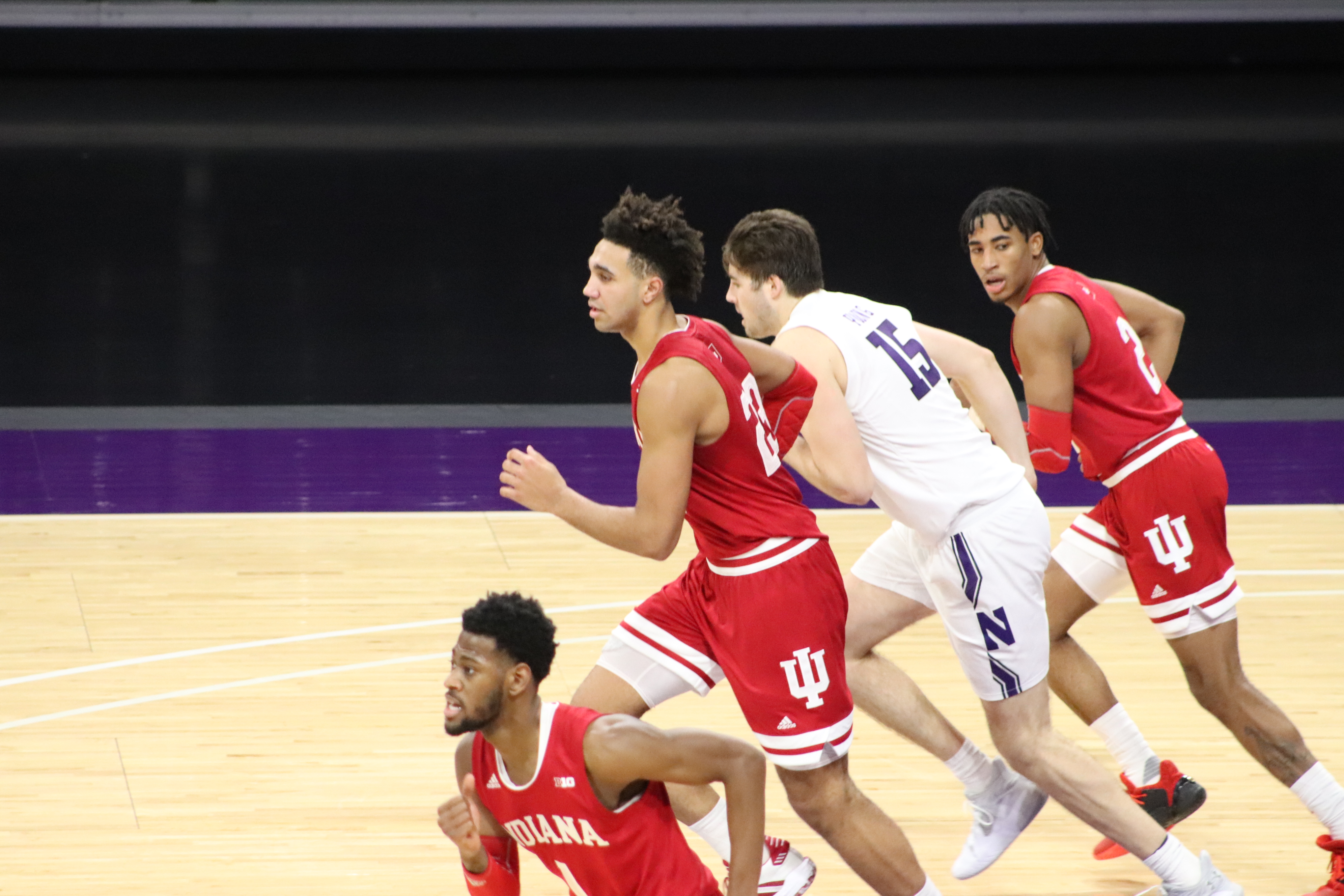
Look, I’m not going to be the first to say that the Big Ten is the best conference in men’s basketball this year. Five teams currently sit in the AP Top 25 Poll, with three sitting in the top five (No. 3 Michigan, No. 4 Ohio State, No. 5 Illinois). Out of 14 teams, 10 (including Northwestern) have been ranked in the AP Poll at some point this year, making this conference ridiculously scary to play in.
Whenever I bring this up, however, I’m reminded that the Big Ten was also scary good last year, and that the experience should have given the ’Cats the edge they needed to claw back and find themselves in a good position. But for this, I offer a very good counter argument.
Last year, the ’Cats played six teams that were ranked in the AP Top 25. This year, with five games left to play, they have played 11. In addition, many experts have said Northwestern’s strength-of-schedule is one of the hardest in the country, with stats archive KenPom ranking it as No. 1.
The @bigten is TOUGH this season 🤯 pic.twitter.com/mumP2IKsD7
— FOX College Hoops (@CBBonFOX) February 15, 2021
Now bear in mind, I’m not saying that this gives the ’Cats a scapegoat when it comes to losses, but it does explain that, despite such a high quality of play, the ’Cats have lost 12 straight games. Not every game is perfect mind you, but it is a reminder that this is a hard conference to play though, especially with a team that has only one NCAA tournament berth to its name.
What’s more, Northwestern certainly grew from last year’s squad, as five of their last six losses have been by less than 10 points, and the team stayed competitive in almost every matchup. Compared to last year, when it seemed like the bench reserves were on the floor to close every game, it’s a heck-of-an improvement.
Which brings us to the biggest critique:
“The ’Cats are poorly coached.”
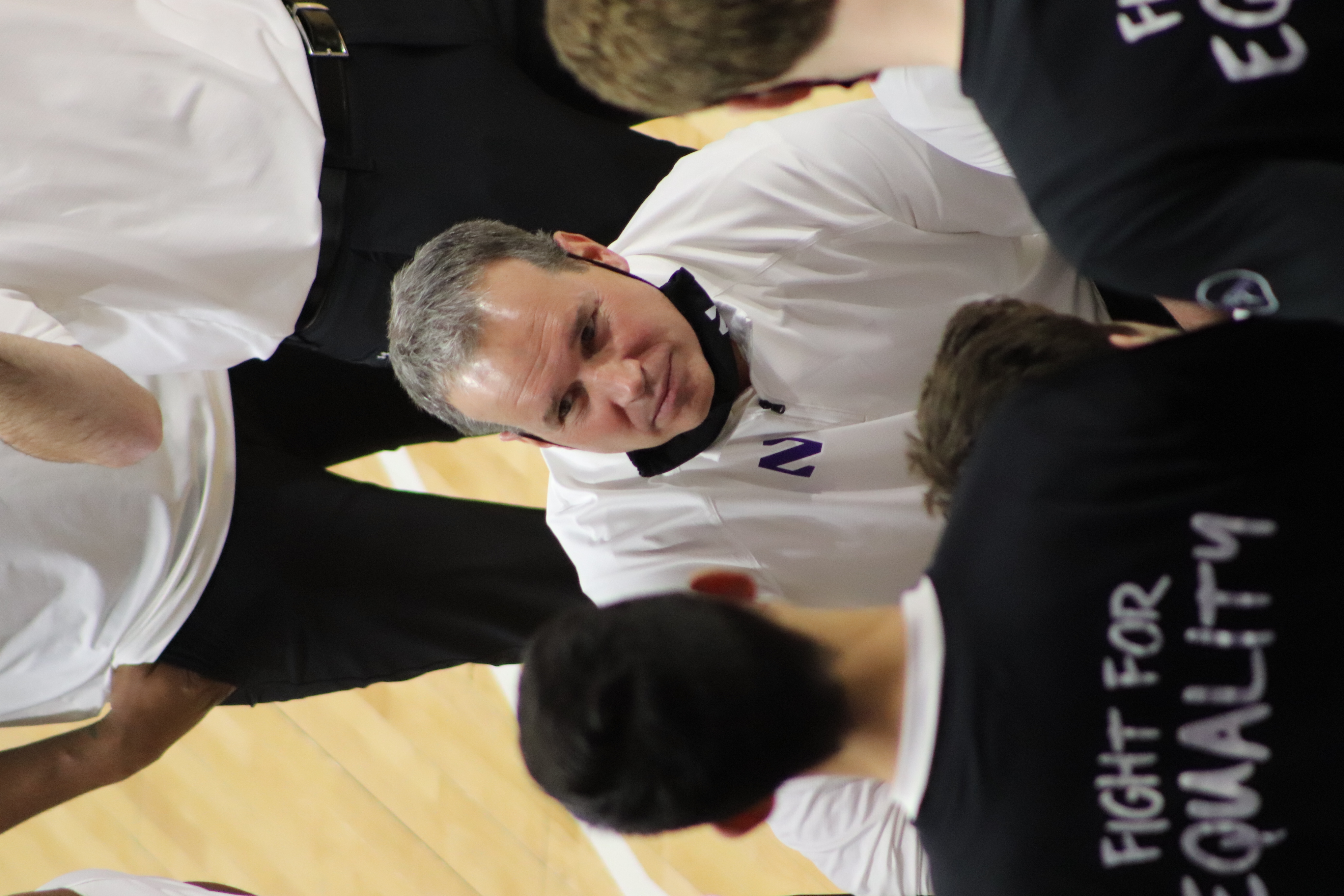
Okay you’re going to need to stay with me on this one, and follow me throughout.
Yes, the ’Cats have issues. They are not a complete team by any means, and they are certainly not going to win the Big Ten this year. But they are not the worst coached team in the country, nor do they deserve all the woe they receive for their head coach, Chris Collins.
Now look, it’s easy to point at multiple losing streaks across the seasons and think “oh, what’s the one common thread for all these teams? I know!” but may I remind you: those teams were extremely young and underdeveloped. Northwestern went boom-or-bust for the 2016-17 squad to make the tournament, and then failed to establish a culture off of that success. That’s why Collins is still here, and is trying to learn from his mistakes with this new young squad. Barring a transfer overload, the ’Cats will return every single player this year, and one of the best recruiting classes in school history — 33rd nationally, and 5th in the Big Ten.
For the harder claim of “good coaches don’t allow 12 game losing streaks,” I implore you to read recaps of the recent games versus Illinois and Rutgers, where, despite losing by almost 20 in the first half of both matchups, the ’Cats were able to fight back, match their opponents, and almost climb the mountain to pull off the upset. While I completely agree that the ’Cats should not have been in those deficits to begin with, a lesser-coached team would have laid down and accepted their fate. This team found a way to claw back and be competitive, despite their spirits being down and suffering a terrible losing streak. That’s not because of raw talent or hopes, that’s the sign of development and the ability to fight.
This team has issues, certainly, namely that they’re not able to play complete games, whether at the beginning of games, or at the tail end, allowing a team to come all the way back. But just because they don’t finish every shot they take, that does not mean they’re poorly coached. They’re working with what they’ve got, and adapting.
That’s what any person good at their job does: adapt.
Conclusion:
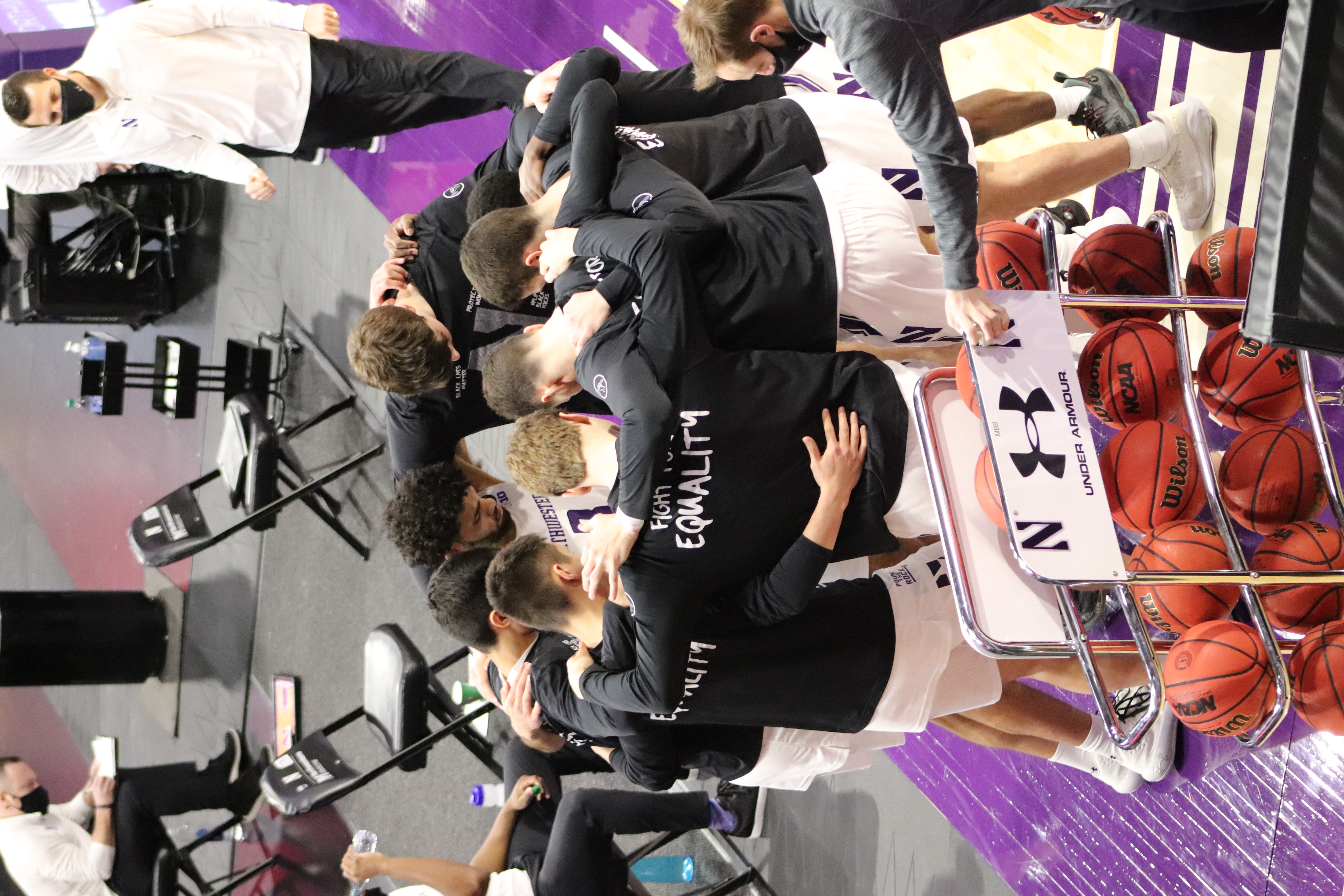
I admit that I am not the forgoing expert on college basketball, nor am I able to break down every single statistic on a whim to show an advantage, but there certainly is development happening in Evanston. Northwestern is not a stone throw away, nor a player needed for the team’s success; everything they need to be great in this sport is at their disposal, and if they can find exactly where to fix problems (i.e. playing a complete 40 minutes, foul trouble, gaining more discipline) there might be confetti raining in Welsh-Ryan Arena next year.
Besides, as we all know, the fan advantage Northwestern’s lacking this year would surely put them over the top.